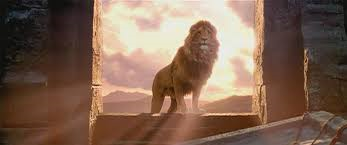Dating from more than 40,000 years ago, the Lion “Man” of Hohlenstein Stadel is the oldest uncontested zoomorphic figure that we know of. Carved from mammoth ivory, and standing about a foot high, the bipedal image combines feline and human characteristics. Since the lions of prehistoric Europe had no manes and there is no clear indication of sex, we cannot say for certain whether the figure is intended as female or male.

In Mithraic art of the early first millennium, the deus leontocephalus—lion-headed god—is a common motif. Shown naked, four-winged, and spirally wrapped in a serpent, his identity is uncertain. Sometimes said to be Aion, the only known inscribed example (from York in England) is identified as Arimanius (= Persian Ahriman?).

Narasimha, generally considered the fourth of Vishnu's 10 major avataras, is depicted as a man with the head and claws of a lion. He first appears in Hindu art during the 3-4th centuries CE. According to his maha-mantra: “O brave and angry Maha-Vishnu, your heat and fire permeate everything. O Lord Narasimha, you are everywhere. You are the death of death, and I surrender to you.”

Like the Hohlenstein Stadel image, the Key Marco Cat combines human and feline (in this case, pantherine) characteristics. The sex is indeterminate. Found waterlogged in a pond on Key Marco, off the Florida coast, the wooden figure is thought to be a product of the Calusa culture and to date to circa 1400.

It's hard not to love C. S. Lewis' Aslan, the Lion-Lord of Narnia: not a tame Lion, no. For all his latter-day Christianity, Lewis loved the Old Ways and refused (as Ron Hutton has observed) to relinquish them. Lewis once received a letter from the mother of a 5-year old boy who was worried that he had committed idolatry (!) because he loved Aslan more than he loved Christ. Lewis, concerned, wrote back to reassure the boy that in loving one, he was loving the other. Perhaps.
But our longing for the Wise and Lordly Animal is a longing deeply human, immemorial.
We conventionally think and speak of the god of witches as horned and male, but we know that on planet Earth—the collective sum of whose biota makes up His corporate body—as in the human heart, the Lord of Beasts takes many, many forms.